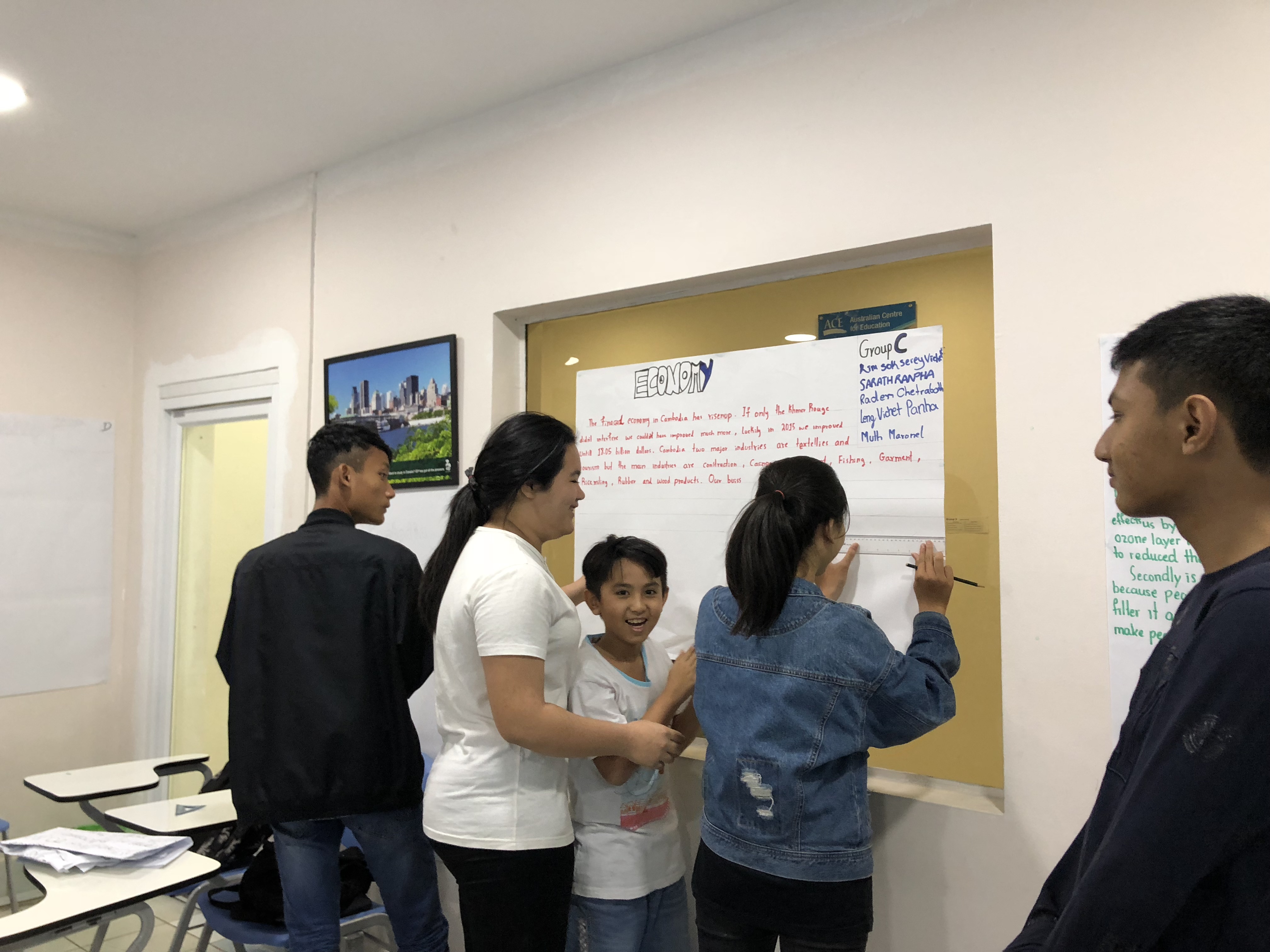Beyond Exams: Other Indicators to Determine a Student’s Capabilities
By: Kiet Brak, ACE Teacher
What is it?
This article is about sharing a classroom activity which allows students to put all the information (language points) they have learnt over 5 weeks into sequential steps through a writing activity. Most teachers might be familiar with this activity called Group Writing; however, the procedure can vary from teacher to teacher. This article will show how to ensure quality production of students’ writing. This writing practice is divided into three major sections.

A group of students standing together with their finished poster
Section #1: Group brainstorming and writing
The teacher divides students into groups of four members. In order not to limit their creativity and freedom, the teacher allocates 10 minutes to each group to decide on one topic under the theme given beforehand. The teacher must distinguish the difference between “themes” and “topics” with an explanations and model examples. After students know what topic to write on, the teacher then gives the students 30 minutes to brainstorm and process the first draft of their writing. To maintain students’ motivation while writing, the teacher should supplement them with designed guidelines and targeted language points. This means that the writing of each group, though in different topics, must contain the language points in the guidelines. While students are writing, the teacher will travel from group to group to monitor and check if any students are left out of the practice.
Section #2: Correcting the other groups’ writing
The teacher initiates the peer correction method by switching groups to check and correct the mistakes in the writing of another group. For example, there are 4 groups: group A, B, C and D. Students in group A go to check the writing of group B, C goes to D, and vice versa. During the 20-minute peer correction, the teacher circulates to observe and monitor the process. Students must be actuated to correct the writing. The teacher should use different questions and techniques of elicitation to trigger students’ interest and curiosity. Moreover, the teacher should also inform students to come up with a rationale for their correction because they will be asked to explain it.

A group of students working as a team to make their poster
Section mini-presentation
The teacher will reallocate two students to go back to their original group, and two students to remain in the correcting group. They must prepare for the short presentation why they correct certain parts of the writing. After the three sections have come to an end, students are asked to write the second draft as homework and submit it later.
Benefits: Writing, Reading and Speaking
These sequential steps of the writing activity serve different purposes. Firstly, it helps students review all the lessons/language points they have learnt in several previous sessions. Secondly, while thinking of the topic to write and coming up with reasonable explanations in their paragraph writing, students will learn to think critically. Thirdly, it helps students to increase their exposures to more English texts because during the brainstorming activity students are encouraged to read online articles for more ideas or search for data to be included in their writing. Fourthly, through the mini-presentations students improve their speaking skills. Lastly, students grow their sense of independence, creativity and ownership when they are encouraged to make a decision on what topic they want to write about.